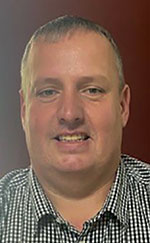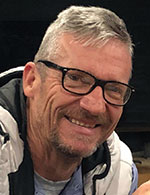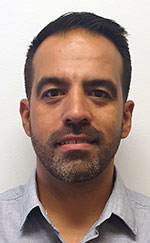
Since 1986, Sanji Security has been designing and manufacturing vehicle alarms and accessories for the South African market. When it recently scored a contract (three years in the making) with Isuzu, it turned to its trusted manufacturing partner, Projects Concern Manufacturing (PCM), to manufacture a solution that met Isuzu’s exacting quality requirements.
“The idea behind the contract is we would fit an alarm system which is backward compatible and plug-and-play on all of the Isuzu D-Maxes coming off its Port Elizabeth production line,” explains Sanji’s R&D; manager, Tony Da Serra. “Together with that, we also do an ultrasonic sensor which we fit into the vehicle’s headliner on certain models. This sensor has a patent on it, and it’s been a very successful design with very minimal changes since inception. Fitment takes place at the Port Elizabeth plant, and we’re expected to achieve a failure rate within 0,05%.”

The Isuzu alarm system was built on the platform of Sanji’s existing MK3 range, which it sells through its dealerships and fitment centres nationwide. Despite being based on a tried and tested system, the stringent failure rate was part of the reason why PCM was chosen to manufacture the Isuzu product.
“Isuzu has a very stringent approach in terms of quality. It stems from the GM days; they have also adopted an internal IQB (Internal Quality Basics) – they’ve basically taken all the quality standards and turned them into an Isuzu specific quality system. And we’re quite comfortable to have Isuzu just walk into PCM and say, ‘Right, where’s this file? Do you have a register for which paste you’ve been using? Do you have a register for the operator that was using the machine? Do you have a register for a reel that was changed?’ All of those processes are already covered by PCM, so for us it was very easy to fall in line – PCM might call it something different, but their processes are well within the IQB standard Isuzu requested,” says Da Serra.
“PCM’s quality standards were indeed up to snuff, but that doesn’t mean the company wasn’t made to jump through hoops anyway. We get audited by lots of different companies, and although you would think that having our ISO9000 certification through TÜV would cover 95% of what we do, when we get audited it only covers a fraction of what a customer requires.
“I think our biggest test was when we started doing work for Alstom, for whom we are an approved manufacturing company. They grilled us for the best part of a year before they certified us, and everything had to have checks and balances in place. Even though we’d already passed yearly audits from some of our customers, we still had to spend a year with Alstom because, as Tony says, they take all the standards, every single thing they can think of around the world, and they develop their own. Just telling them you have ISO9000 is not good enough for them; you have to adopt and adapt to that. Thanks to the fact that we’d come out of the Alstom challenge, the IQB was quite easy. It’s a lot of red tape, a lot of paperwork, but it’s checkboxes of all the things that have to be done. But then you’ve got to back that up, because when the guy walks in, there’s no point checking a box when you can’t prove it, because he’s going to send a guy down who knows what he’s looking for, and if it’s not there he’s going to catch you out.”
Who does what, and why?
“We do a full kitting, so Sanji purchases all the components and then we make up kits,” Da Serra continues. “PCM either collects the kits or we deliver the kits to them. The manufacturing of these products is very much a partnership – as much as we look after the quality of the product, so does PCM.”
As to why PCM was the preferred manufacturer for this project, Da Serra says, “We just find that every time you go to PCM there’s a new machine or a new technology – it’s actually quite amazing. We find that they know what they’re doing, and you can phone them any time of the day and they’ll always answer the call. They understand the products, they understand their limitations, they invest in their business, so they’ve got plenty of new equipment, a lot of which is automated. They also have AOI (automatic optical inspection) at the end of the line to do the checking, and I believe there’s now a 3D AOI which could be used on some of the products. So I’m confident that they understand the quality of the product, and they’ve got an open door policy – if there’s any problem we can always pop in and have a chat in terms of lead time issues from our side, changes of components, changes of PCBs, etc.”
As to what stands out in terms of how Sanji’s objectives were achieved, Flynn has this to say: “I always look at it as a partnership with our customer – we treat ourselves as an extension of their production facility. Every one of our customers is part of our facility and we’re part of theirs. So that’s the connection and the relationship we have with our customers – the fact that they can pop in any time, there’s no restricting them to only see us at certain times. So whether they’re walking into their own factory or our factory, it’s the same thing.”
Some of its customers have people who literally stay on PCM’s site and do their own thing. “We don’t have anything to hide, our open door policy is prime, as are honesty and transparency – all the things I think businesses today have lost. To make a buck they’re all trying to outshine somebody, or con somebody, or pull the wool over someone’s eyes. Our philosophy has always been and always will be openness and transparency. Our competitors are very complimentary of us because they see us and they say to us ‘why are you guys so nice?’ But that’s just what we’re all about: there’s always a friendly smile when you come in the door, and somebody’s always there to look after the customer,” Flynn states.
Flexibility is strength
A key aspect of PCM’s success and reputation is that if a client needs something the company doesn’t have, it will invest in that. For instance, PCM did a job for Alstom who wanted conformal coating and torque tightening and environmental ovens – just for them PCM added the necessary capabilities. But the benefit is that all those added capabilities that it invests into its plant benefit all its other customers as well.
Flexibility goes even further: due to the price sensitivity of Sanji’s product, there is no room for things like adding mark-ups to components, so the two companies have come to an arrangement that kits get supplied by Sanji since, as an OEM, it gets preferential pricing. Sanji negotiates prices, stock, backup, lead times, etc. with its suppliers. This creates a win-win situation: it gets the preferential pricing, and the added benefit that it doesn’t have to run its own store – the stock is delivered straight to PCM’s store and put into its stock system, so it brings it in as if it’s its own part, the only difference being that it has zero value-add.
Says Flynn: “Our traceability is good, and Sanji and other customers have traceability on their own end where they can track what’s come in or hasn’t. When you put the two together you have almost 99% coverage. Customers don’t just drop a kit off and have no control, we have to manage it for them – it’s their ability to trace those, so for example Sanji will have its paperwork and we have ours, and there’s always a paper trail. The fact that we manage that as if it’s our own component gives us the benefit to offer that service. We’re not making any profit out of it, it’s all about building and securing that relationship you have with a customer.”
The agreement with Sanji sets a limit on what is allowable as a wastage factor, and stocktake gets done roughly twice a year. If there’s something missing or if a discrepancy is too high, PCM relies on its roughly seven-year relationship with Sanji to be able to openly discuss and negotiate their way around the problem.
“When a customer calls and says there’s a problem with our boards, my instant reaction is to look within our factory and say ‘guys, what have you done wrong?’ My motto is 100% satisfaction, so I will always look internally first for any problems. If we find out it’s not our process, it’s about being diplomatic and saying to the customer, ‘you know, maybe there’s a layout issue, let’s have a look at it together,” says Flynn.

Project flow and obstacles overcome
There are two parts to this particular product, Da Serra explains. “There’s the original system which we call the MK3 range, and unfortunately I put PCM under a bit of pressure there because what we do is we separate the board into what we call ZZA and ZZB; there’s an SMD component and a through-hole component. We knew the SMD side was always going to be pretty much exact and the design of that probably took around six months to get right – what we’ve done is streamline the process by placing relays differently to effectively create different products.
“I leaned on PCM quite a bit there because we created new parts on the fly, so I would literally tell them, ‘ok here’s a new part, it’s used in the same SMD, but we’re going to try do such and such. We actually use this to test the market and see what people like. We’ve now streamlined the MK3 range to be based on just one board, with different software that wakes up different parts of the alarm or immobiliser section, and we’ve used that basis for the Isuzu project. That’s what makes us quick to market.”
Essentially what Sanji has built is a ‘Rolls Royce’ platform and by activating certain parts of the circuit or moving relays around, it can cater for different features. “So if a manufacturer came to us today and asked for a custom solution, we can accommodate them. If someone came to our door and said they want a central locking system, jamming detection, and selective unlock with some anti-hijack features, we can say such and such a board would suit you best. I would then go to PCM and say we’ve made the SMD version of this product, let’s move the relays around, and if I send them a new layout this morning, they’ll probably do the production run this afternoon and have it delivered to us the following morning, that’s how quickly we can do that. Then it’s just up to the software guys to write up some software, make sure everything works, and then we do our field test. So we could have a new product in easily five days.”
The features available from the MK3 range allow Sanji to take any vehicle without security and upgrade it to a full alarm system with interior and perimeter protection, as well as jammer detection, for example. If a vehicle comes out with a key fob that has a lock or unlock button on it, these days it’s often not an alarm system but rather a central locking system, which has to be upgraded to an alarm.
Over a 30 metre radius, the Sanji MK3’s jamming detection technology scans the 433 MHz band that alarm systems, and therefore jammers, operate on. If your vehicle is being jammed, the user is alerted by
means of indicator flashes and a hooter pulse or siren pulse. This jam-alert feature makes use of Sanji’s proprietary detection technology and can fight against the biggest growing trend in theft of valuables from your vehicle. The theft of your laptop or mobile device could be critical to your business or devastating in regard to loss of personal information.

Tackling challenges using experience
“The reason we chose PCM is that they have a lot of manufacturing experience,” Da Serra continues. I came along with a four-layer board and I asked them for their advice in terms of a paste screen, which components to place, what packages are workable and which aren’t. I never give a spec of a paste screen to anyone at PCM; I just say ‘here’s my board, these are the components we’re going to use, please run me a paste screen.’
“They then just go ahead based on their past experience and when it gets to actual production the team there does all the setups, they make sure that the board gets placed correctly at whatever speeds …. we actually don’t get involved at all, because we trust their advice and expertise. When it comes to the actual wave solder or the oven temperature, etc., that’s something I don’t even need to think about. So by the time it’s run through the AOI, I get a board that’s manufactured with no dry joints, it’s been checked completely, and every single component is within limits.”
Deon Miller, managing director of PCM, acknowledges that there are challenges when it comes to any kitting arrangement. “This includes the people element, where people need to check their kits and verify them, just to make sure that we deliver the highest quality product to the customer. Tony and his team normally iron out 80 to 90 percent of all the issues before a kit comes through to us. We then just do the complete final assembly and that’s where our expertise comes into play to make sure we assist the customer as well as possible to give them a proper product. A four-layer board like Sanji’s is straightforward for us; we’ve actually run twelve- to fourteen-layer boards for some of our military customers. The amount of experience from our side is huge: just between Sean and our operations director, Mike Flynn, they have 64 years in this industry which comes into play when ironing out any issues.”
Lessons learned
It has been said that to err is human; to persist in error is diabolical. Mistakes will be made, and it’s important to learn from them, but Flynn says there isn’t anything PCM would go back and do differently on this project. “We’re continually learning; it’s not one of those things where we have a particular challenge in a project. As Tony alluded to earlier, every time you walk into our facility there’s something new, or something’s been changed – that is the continuous evolution of dealing with the little problems and minor challenges we have. Our store started off as a tiny little area, and it’s now probably three quarters the size of the production floor, and that’s because we’re getting new demands from customers.
“I’d say maybe a challenge on this project was the potential for it to become a high runner, and that’s always something that’s discussed internally around the table: ok we’re tackling a new project, with a new customer, this thing could run into higher volume, how are we going to handle that? So we as a team would sit down and without the client even being aware of it, we’re deciding things like needing such and such a machine, we need to make sure our stores capability is in place, and so on. These are the things that continually evolve.”
From Da Serra’s side, he says that since this product stemmed from Sanji’s first range, many of the lessons learned were around streamlining production and finding the right mix of products for a particular market sector. “Also I would say having a single board which we could then develop and turn into whatever we needed very quickly. To me that has been quite rewarding, seeing the speed of things and how quickly we could change things through on PCM’s side.”
Of course, a major problem facing any electronics manufacturer these days is component shortages, and Da Serra says it is getting worse. “In 2021 it’s going to be very difficult to try and get the right components, bearing Covid and the silicon wafer shortage in mind. We do all our kitting and we probably deal with 80% of the shortages as fast as we can, and as the components get here we send them off to PCM, and that’s also where they’re quite flexible. They’ve just recently put in a high-speed line, but I can literally deliver that last remaining part that’s needed, which possibly costs 0,01 cents, and I can deliver it to them today and by tomorrow I’ll have a delivery at my door. Nobody has a crystal ball, but you need to find the right mix of components so that you never run out of supply.”
For more information contact:
• Deon Miller ([email protected]),
• Sanji Electronics,
| Tel: | +27 11 608 5210 |
| Email: | [email protected] |
| www: | www.projectsconcern.co.za |
| Articles: | More information and articles about Projects Concern Manufacturing |

© Technews Publishing (Pty) Ltd | All Rights Reserved